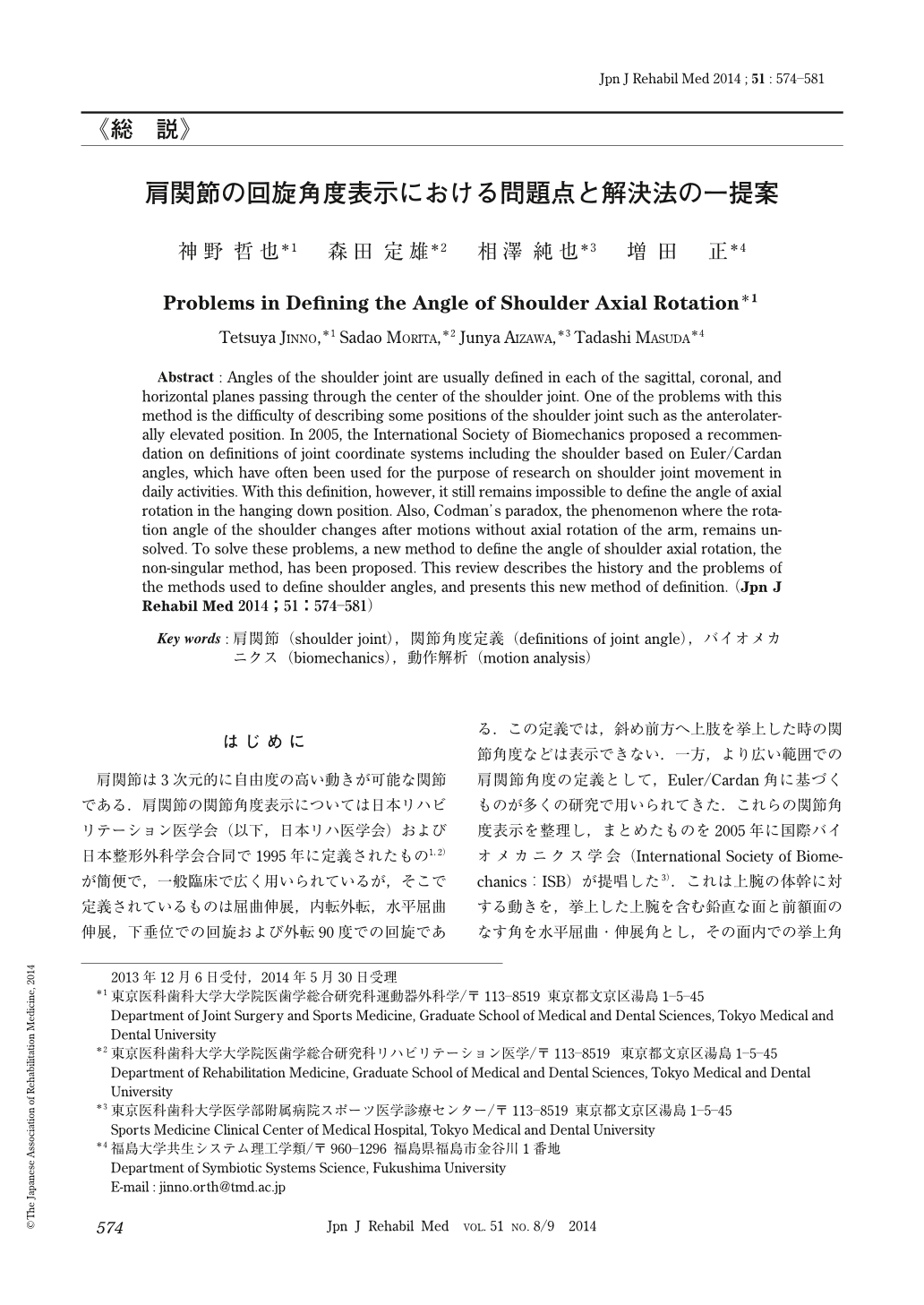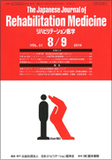Japanese
English
- 販売していません
- Abstract 文献概要
- 1ページ目 Look Inside
- 参考文献 Reference
はじめに
肩関節は3次元的に自由度の高い動きが可能な関節である.肩関節の関節角度表示については日本リハビリテーション医学会(以下,日本リハ医学会)および日本整形外科学会合同で1995年に定義されたもの1,2)が簡便で,一般臨床で広く用いられているが,そこで定義されているものは屈曲伸展,内転外転,水平屈曲伸展,下垂位での回旋および外転90度での回旋である.この定義では,斜め前方へ上肢を挙上した時の関節角度などは表示できない.一方,より広い範囲での肩関節角度の定義として,Euler/Cardan角に基づくものが多くの研究で用いられてきた.これらの関節角度表示を整理し,まとめたものを2005年に国際バイオメカニクス学会(International Society of Biomechanics:ISB)が提唱した3).これは上腕の体幹に対する動きを,挙上した上腕を含む鉛直な面と前額面のなす角を水平屈曲・伸展角とし,その面内での挙上角を定義し,その時の上腕の回旋角度で回旋角を決めるものである.回旋角度の基準は肘関節90度屈曲位で前腕が水平になる角度を回旋0度と定義している.この方法によりほとんどの位置での回旋を含めた肩関節角度を定義することが可能となるが,この定義でも上腕下垂位での肩関節回旋角度が定義できないという問題が残っている.本稿では肩関節の回旋角度の定義を中心に,今まで用いられてきた定義と,われわれが考案した新たな定義について紹介するので,今後の検討の参考とされたい.
Abstract : Angles of the shoulder joint are usually defined in each of the sagittal, coronal, and horizontal planes passing through the center of the shoulder joint. One of the problems with this method is the difficulty of describing some positions of the shoulder joint such as the anterolaterally elevated position. In 2005, the International Society of Biomechanics proposed a recommendation on definitions of joint coordinate systems including the shoulder based on Euler/Cardan angles, which have often been used for the purpose of research on shoulder joint movement in daily activities. With this definition, however, it still remains impossible to define the angle of axial rotation in the hanging down position. Also, Codman's paradox, the phenomenon where the rotation angle of the shoulder changes after motions without axial rotation of the arm, remains unsolved. To solve these problems, a new method to define the angle of shoulder axial rotation, the non-singular method, has been proposed. This review describes the history and the problems of the methods used to define shoulder angles, and presents this new method of definition.

Copyright © 2014, The Japanese Association of Rehabilitation Medicine. All rights reserved.


